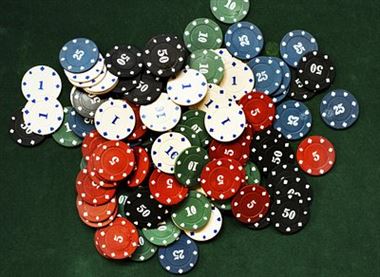Mastering Poker Strategy: Pro Tips for Crushing Your Opponents is a comprehensive guide that provides valuable insights and techniques to enhance your poker skills. Whether you are a beginner or an experienced player, this guide offers expert advice on various aspects of poker strategy, including hand selection, bluffing, reading opponents, and managing your bankroll. By implementing these pro tips, you can significantly improve your chances of success at the poker table and outplay your opponents.
The Importance of Bankroll Management in Mastering Poker Strategy: Pro Tips for Crushing Your Opponents
Bankroll management is the practice of effectively managing your poker funds to ensure long-term success. It involves setting limits on how much you can afford to lose, determining the appropriate stakes to play at, and sticking to a disciplined approach. Without proper bankroll management, even the most skilled players can find themselves in a downward spiral.
The first step in effective bankroll management is setting a budget. Determine how much money you can comfortably afford to lose without it affecting your daily life or financial obligations. This amount should be separate from your regular income and savings. By setting a budget, you are creating a safety net that protects you from potential losses.
Once you have set a budget, the next step is to determine the appropriate stakes to play at. This is crucial because playing at stakes that are too high for your bankroll can lead to disaster. As a general rule of thumb, it is recommended to have at least 20 buy-ins for the stakes you are playing. For example, if you are playing $1/$2 no-limit hold’em, you should have a bankroll of at least $4,000.
It’s important to note that bankroll requirements can vary depending on the type of poker game you are playing. Cash games typically require a larger bankroll compared to tournaments, as the variance in cash games can be higher. Additionally, the skill level of your opponents should also be taken into consideration when determining the appropriate stakes.
Once you have determined the appropriate stakes, it’s crucial to stick to your bankroll management plan. This means resisting the temptation to move up in stakes too quickly or chasing losses by playing at higher stakes. It’s easy to get caught up in the excitement of the game and make impulsive decisions, but discipline is key to long-term success.
Another important aspect of bankroll management is tracking your results. Keeping a record of your wins and losses allows you to analyze your performance and identify any leaks in your game. It also helps you determine if you are playing at the right stakes and if any adjustments need to be made to your bankroll management plan.
In addition to setting a budget, determining the appropriate stakes, and tracking your results, it’s also important to have a contingency plan. Poker is a game of ups and downs, and even the best players experience losing streaks. Having a backup plan in place, such as a separate emergency fund or a source of additional income, can help you weather the storm during tough times.
Analyzing Hand Ranges: Pro Tips for Mastering Poker Strategy and Outplaying Your Opponents
When analyzing hand ranges, it’s essential to consider the pre-flop action. The hands your opponents choose to play before the flop can give you valuable information about their range. For example, if a player raises from an early position, their range is likely to be stronger than if they raise from a late position. By paying attention to these details, you can narrow down your opponents’ possible holdings.
Another factor to consider when analyzing hand ranges is the board texture. The community cards that are dealt on the flop, turn, and river can greatly impact the range of hands your opponents might have. For instance, if the board is very coordinated with multiple straight and flush possibilities, your opponents are more likely to have strong hands. On the other hand, if the board is dry and uncoordinated, their range is likely to be weaker. By carefully evaluating the board texture, you can make more accurate assumptions about your opponents’ hands.
It’s also crucial to pay attention to your opponents’ betting patterns. The size and frequency of their bets can provide valuable insights into their hand range. For example, if a player makes a small bet on the flop and then follows it up with a large bet on the turn, it could indicate that they have a strong hand. Conversely, if a player consistently makes small bets throughout the hand, they may have a weaker range. By observing and analyzing these betting patterns, you can make more informed decisions and exploit your opponents’ weaknesses.
Position is another critical factor when analyzing hand ranges. The position you and your opponents are in can greatly influence the range of hands they are likely to play. Players in early positions are more likely to have stronger hands, as they have to act first and face potential raises from later positions. Conversely, players in late positions have more information and can afford to play a wider range of hands. By considering the position of your opponents, you can narrow down their range and make better decisions based on that information.
Finally, it’s important to remember that hand ranges are not set in stone. They are constantly evolving throughout the hand as new information becomes available. As the community cards are revealed and the betting action unfolds, you need to adjust your opponents’ ranges accordingly. By staying flexible and adapting to the changing dynamics of the hand, you can stay one step ahead of your opponents and make more profitable decisions.
Reading Poker Tells: Pro Tips for Mastering Poker Strategy and Gaining an Edge on Your Opponents
Reading poker tells is an art that takes time and practice to develop. It involves paying close attention to your opponents’ actions and looking for patterns or deviations from their usual behavior. One common tell is when a player hesitates before making a bet or a raise. This hesitation often indicates that they are unsure about the strength of their hand and are considering whether to proceed or fold.
Another tell to watch out for is when a player suddenly becomes more talkative or animated. This change in behavior can be a sign of nervousness or excitement, which may indicate that they have a strong hand. Conversely, if a player becomes unusually quiet or still, it could mean that they are trying to hide their emotions and bluff their way through the hand.
Body language can also reveal a lot about a player’s hand. For example, if a player leans forward and leans in closer to the table, it often indicates that they have a strong hand and are confident in their decision. On the other hand, if a player slumps back in their chair or avoids eye contact, it may suggest that they are unsure or bluffing.
Betting patterns are another valuable source of information when it comes to reading poker tells. Pay attention to how your opponents bet in different situations. Do they consistently bet a certain amount when they have a strong hand? Do they tend to check or bet small when they are weak? By analyzing these patterns, you can gain insights into their hand strength and adjust your own strategy accordingly.
It’s important to note that reading poker tells is not foolproof. Some players are skilled at disguising their emotions and behavior, making it difficult to accurately assess their hand strength. Additionally, tells can vary from player to player, so it’s essential to observe each opponent individually and not rely solely on generalizations.
To improve your ability to read poker tells, practice is key. Play as many hands as possible and pay close attention to your opponents’ actions and behaviors. Take notes on their tendencies and review them after each session. Over time, you will start to notice patterns and develop a better understanding of your opponents’ playing styles.
Advanced Bluffing Techniques: Pro Tips for Mastering Poker Strategy and Fooling Your Opponents
The first tip for successful bluffing is to choose your opponents wisely. Bluffing is most effective against players who are more risk-averse and tend to fold easily. These players are more likely to believe your bluff and fold their hands, giving you the opportunity to win the pot. On the other hand, bluffing against experienced and skilled players can be risky, as they are more likely to see through your bluff and call you out. Therefore, it is important to assess your opponents’ playing styles and tendencies before attempting a bluff.
Timing is everything when it comes to bluffing. A well-timed bluff can be devastating to your opponents, while a poorly timed one can cost you dearly. The key is to bluff when the circumstances are in your favor. For example, bluffing on the flop or turn when there are few cards that could improve your opponents’ hands can increase the chances of success. Additionally, bluffing when you have a tight table image can make your opponents more likely to fold, as they perceive you as a conservative player who only bets with strong hands.
Another important aspect of bluffing is the ability to read your opponents’ reactions and body language. Pay close attention to their facial expressions, hand movements, and betting patterns. If you notice signs of discomfort or hesitation, it could indicate that they are unsure about the strength of their hand and may be more susceptible to a bluff. Conversely, if your opponents appear confident and relaxed, it may be wise to reconsider your bluffing strategy.
One advanced bluffing technique is the semi-bluff. A semi-bluff is when you have a drawing hand that has the potential to improve on future streets. By betting or raising with a semi-bluff, you not only have a chance to win the pot immediately if your opponents fold, but you also have the potential to make a strong hand and win the pot at showdown. This adds an extra layer of complexity to your bluffing strategy and can make it more difficult for your opponents to read your intentions.
Finally, it is important to remember that bluffing should be used sparingly and strategically. Bluffing too often can make you predictable and allow your opponents to exploit your strategy. It is crucial to mix up your play and balance your bluffs with strong hands to keep your opponents guessing. Additionally, be prepared for the possibility of being called. If your bluff is called, you should have a backup plan and be ready to adjust your strategy accordingly.
Exploiting Weaknesses: Pro Tips for Mastering Poker Strategy and Dominating Your Opponents
One of the first things you need to do is observe your opponents closely. Pay attention to their betting patterns, body language, and any other tells they may have. This will give you valuable information about the strength of their hand and help you make better decisions. For example, if you notice that a player always raises when they have a strong hand, you can use this information to your advantage by folding when they make a big bet.
Another important aspect of exploiting weaknesses is understanding the concept of pot odds. Pot odds refer to the ratio of the current size of the pot to the cost of a contemplated call. By calculating the pot odds, you can determine whether it is profitable to call a bet or not. If the pot odds are higher than the odds of completing your hand, it is a good idea to make the call. This is a fundamental concept in poker strategy and can greatly improve your chances of winning.
Bluffing is another powerful tool in your arsenal. By bluffing, you can make your opponents believe that you have a stronger hand than you actually do, causing them to fold and giving you the pot. However, bluffing should be used sparingly and strategically. It is important to pick the right moments to bluff and to read your opponents accurately. If you bluff too often or against players who are unlikely to fold, you will quickly lose credibility and your bluffs will become ineffective.
Position is also crucial in poker strategy. The later you act in a hand, the more information you have about your opponents’ actions. This allows you to make more informed decisions and exploit their weaknesses. For example, if you are the last to act and notice that all your opponents have checked, you can make a bet to steal the pot, even if you have a weak hand. On the other hand, if you are one of the first to act, you should be more cautious and only play strong hands.
Lastly, it is important to manage your bankroll effectively. This means setting limits on how much you are willing to lose and sticking to them. It is easy to get caught up in the excitement of the game and start making reckless bets. However, this can quickly lead to financial ruin. By setting limits and sticking to them, you can ensure that you are playing within your means and avoid unnecessary losses.
In conclusion, mastering poker strategy and crushing your opponents requires a combination of skill, strategy, and psychology. By observing your opponents, understanding pot odds, bluffing strategically, playing in position, and managing your bankroll effectively, you can greatly improve your chances of success. Remember, poker is a game of skill, and with practice and dedication, you can become a formidable player. So, study the game, hone your skills, and get ready to dominate the poker table.




